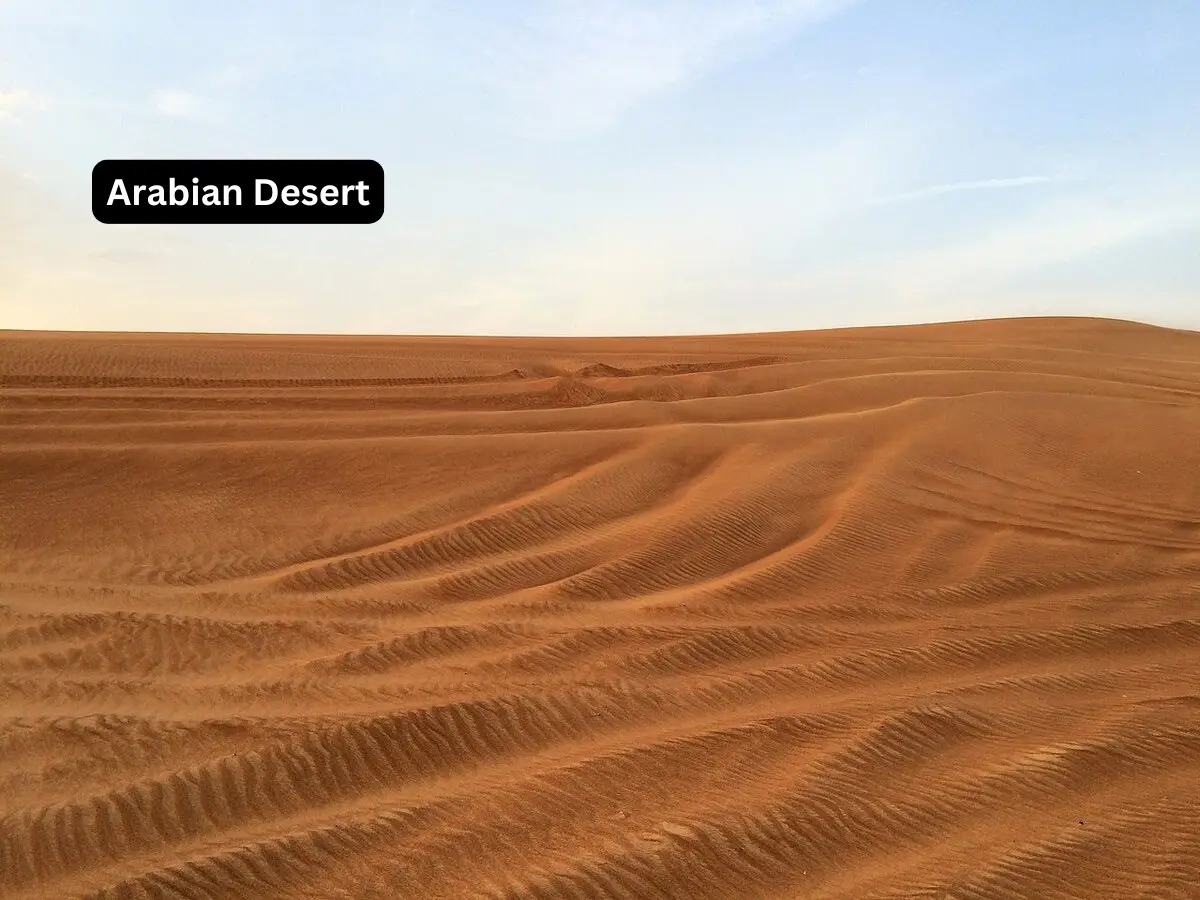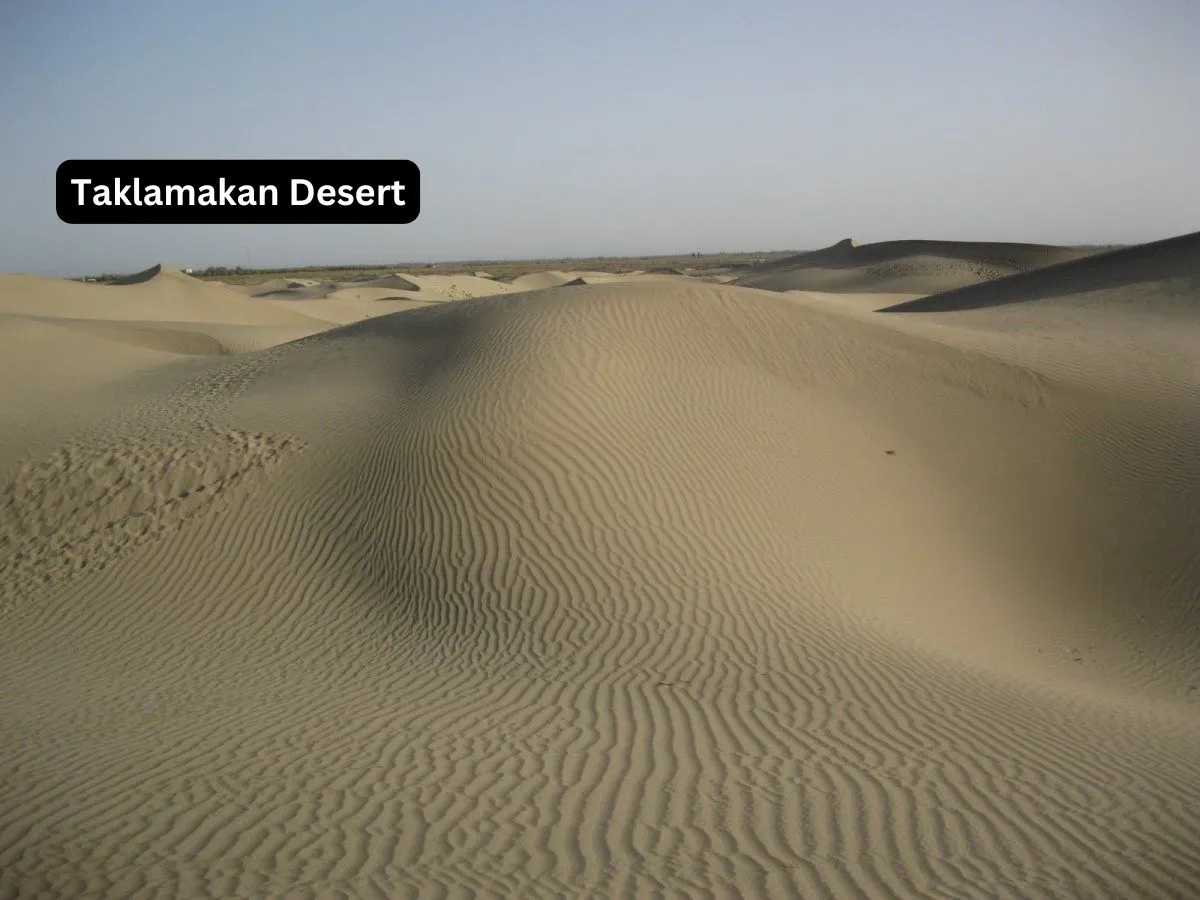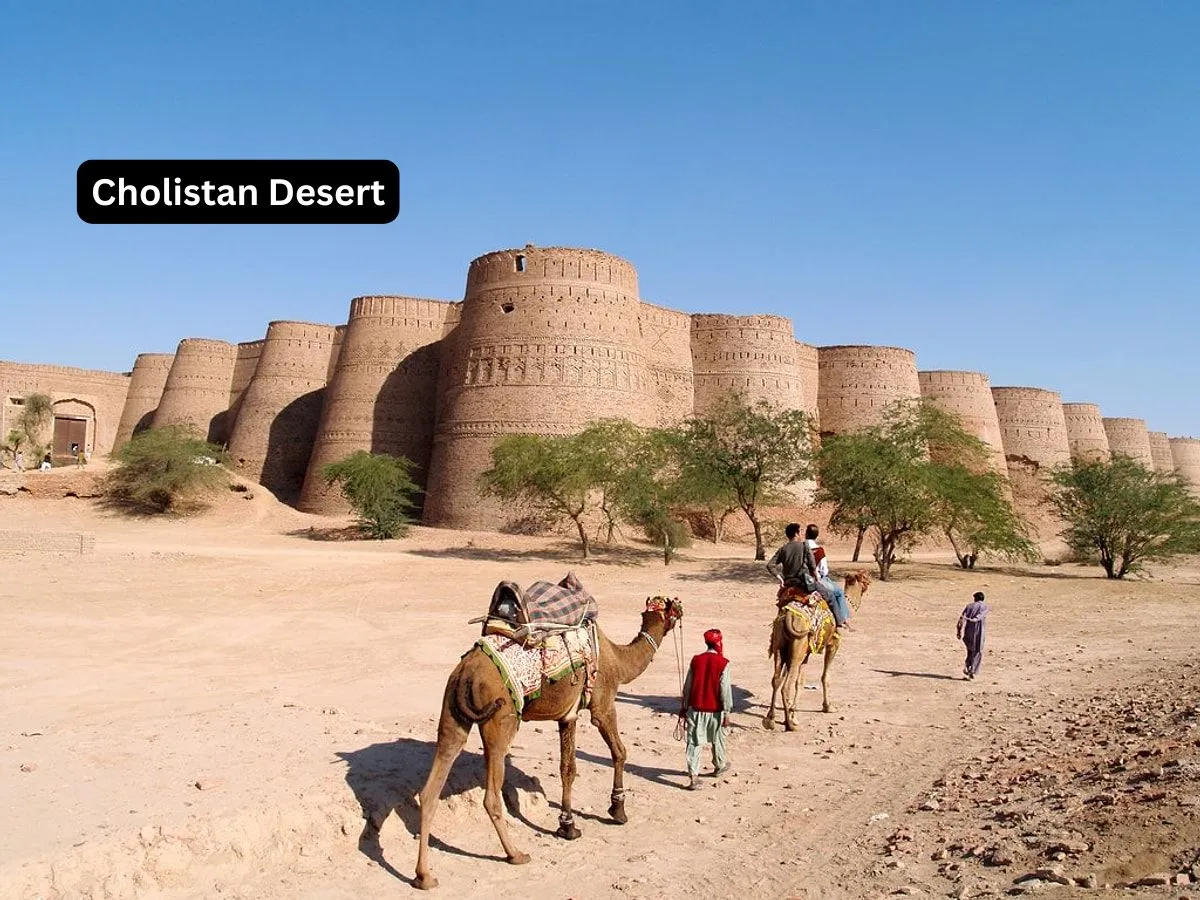The Arabian wilderness, the biggest desert in Asia, stretches over 2.3 million square kilometers throughout the Arabian Peninsula. This giant expanse of arid land, recognised for its extreme warmth and minimal rainfall, is domestic to amazing wildlife and specific landscapes.
Why is the largest desert in Asia so significant?
Its size and challenging environment create a fascinating ecosystem, making it one of the most remarkable deserts on the planet.
Top 10 largest Desert in Asia
1. Arabian Desert

The Arabian wilderness, the largest desolate tract of Asia and the fourth biggest wasteland within the international area, is positioned in Western Asia. The huge wilderness of approximately 2,330,000 square km stretches throughout most parts of the Arabian Peninsula.
Despite the acute conditions, the Arabian desert hosts a few barren region-adapted species like the oryx, gazelles, sand cats, lizards, and so on.
Many species of the wilderness have become extinct due to overgrazing and hunting. There is very little vegetation inside the area. The desolate tract additionally has regions with treacherous quicksand.
2. Gobi Desert
The Gobi desert positioned in northern and northwestern China is Asia’s 2d biggest desert and the world’s fifth biggest desert. It lies within the rain shadow of the Tibetan Plateau. The barren region is well-known in history as the home of several towns along the ancient Silk course.
It was additionally part of the top notch Mongol Empire. The wilderness spans throughout an area of 1,295,000 square km. The landscape of maximum of the Gobi wilderness capabilities bare rock as opposed to sand. Fossils of early mammals, prehistoric human artifacts, and dinosaur eggs were observed in the Gobi wasteland.
3. Thar Desert
The fantastic Indian wasteland or the Thar barren region is a large barren region in the Indian subcontinent’s northwestern phase. Its bureaucracy is a natural boundary between India and Pakistan where eighty five% of the desolate tract region lies within India and the rest in Pakistan.
several blanketed areas of India and Pakistan just like the desert countrywide Park, the Tal Chhapar Sanctuary, and the Rann of Kutch flora and fauna Sanctuary serve to protect the particular vegetation and fauna of the wilderness habitat.
The biodiversity found right here is quite wealthy in contrast to other desolate tract areas of the sector. The blackbuck, Indian wild ass, chinkara, desert fox, caracal, etc., are the first-rate fauna of the wilderness. 141 species of migratory and resident birds may be observed right here.
The Thar wilderness is the sector’s maximum densely populated desert and has a population density of 83 according to rectangular km.
4. Taklamakan Desert

The Taklamakan desolate tract is located in the Xinjiang Uyghur self sustaining vicinity of China. It is surrounded by mountains to the north, south, and west and the Gobi desolate tract to the east.
The Taklamakan wasteland occupies an area of 337,000 square km which is nearly identical to the dimensions of Germany. 85% of the desert comprises shifting sand dunes making it the second one biggest transferring sand desolate tract within the global. cross-desolate tract highways exist at the Taklamakan wasteland.
The barren region has been defined in several bills of ancient vacationers who’ve defined it as a dangerous wilderness which can without problems claim lives of individuals who stray far from the recognised paths.
5. Dasht-e Kavir
The Dasht-e Kavir, also referred to as the first rate Salt barren region, is positioned within the central Iranian Plateau location. It encompasses a complete surface area of approximately seventy seven,600 square km. It’s miles from the arena’s 23rd largest wilderness.
The Dasht-e Kavir functions in giant areas of salt marshes like the 1,800 square km big Daryahcheh-e Namak. It also hosts an included ecological region named as the Kavir country wide Park.
Despite the fact that the wasteland gets little precipitation, run-offs from the encircling mountains create huge marshlands, playas, and transient lakes within the wasteland. Sand and pebbles constitute the barren region soil. Mugwort is the maximum commonplace plant growing right here. Birds like sandgrouses, larks, floor jay, etc., live right here.
The mammalian fauna of the Dasht-e Kavir include camels, goats, Persian gazelles, Asiatic cheetah, etc. there may be negligible human habitation in the vicinity.
6. Dasht-e Loot
Additionally known as the Loot wilderness, the Dasht-e Loot, the 25th biggest barren region on earth, is located in Iran. Here, it occupies parts of the Baluchistan, Kerman, and Sistan provinces of the country. In 2016, the wilderness became inscribed as a UNESCO global heritage web page.
The desert features a plateau, ravines, sinkholes, salt apartments, and a series of furrows and ridges, and massive expanses of sand. The sand dunes discovered within the southeast of this wilderness are among the international’s tallest sand dunes achieving a height of approximately 980 ft.
The land floor temperature at Dasht-e Loot regularly reaches 70.7 °C making it one of the hottest locations on our planet.
7. Poland Desert
Also called the Mozaffari desert, the Polond wilderness is a wilderness located in Iran’s South Khorasan Province. it’s far a part of the Mozaffari protected place. The sand dunes and sandy hills of the Poland barren region with the mountains in the backdrop offer stunning landscapes to the ones journeying the region.
Most of the vacationer attractions here are the Cheetah’s Tail, a sand dune that is shaped like the tail of a cheetah. The Ferdows hollow-in-the-Rock, a geological enchantment, is also present in this barren region.
8. Maranjab Desert
The Maranjab barren region is an Iranian desolate tract located in the Aran va Bidgol, Isfahan Province. The desert is one of the satisfactory locations for off-roads trips inside the u . s .. Wolves, hyenas, reveal lizards, chameleons, sand cat, eagle, etc., are a number of the remarkable fauna of the wilderness habitat.
9. Cholistan Desert

The Cholistan desolate tract occupies an area of 26,300 rectangular km stretching from Bahawalpur, Punjab, Pakistan to the Thar wilderness of India. The Hakra River runs through the desert and many settlements of the Indus Valley Civilization are discovered along the banks of the river.
The wasteland is inhabited with the aid of semi-nomadic tribes who migrate through the desolate tract looking for food and fodder. The Cholistan Wilderness Jeep Rally, an annual Jeep rally, is hosted in this barren region.
10. Indus Valley Desert
The Indus Valley barren region is a faraway and desolate vicinity of northern Pakistan. The desert encompasses a place of 19,501 rectangular km inside the United States’s northwestern Punjab Province. The desert region reviews extremes of weather starting from extremely warm summers to freezing winters.
The striped hyena, caracal, urial, Indian leopard, and the Indian wolf are the tremendous mammalian fauna of the Indus Valley wasteland. Little farming or grazing sports are achieved right here. Hunting is common in the location and accordingly the wildlife right here face constant change.
FAQ’s
What is the largest desert in Asia?
The Arabian Desert is the largest desert in Asia.
How large is the largest desert in Asia?
It spans over 2.3 million square kilometers.
Where is the largest desert in Asia found?
It covers much of the Arabian Peninsula.
What makes the largest desert in Asia unique?
Its harsh climate supports rare desert-adapted wildlife.
How is life possible in the largest desert in Asia?
Species here are uniquely adapted to survive extreme conditions.
Termination
Asia’s largest deserts, including the Arabian Desert, offer a stunning variety of landscapes and ecosystems. Despite their harsh conditions, these deserts support resilient wildlife and hold significant historical and cultural value.
From the vast Arabian sands to the rocky Gobi and shifting dunes of Taklamakan, each desert tells a unique story of survival, making them fascinating and vital parts of our natural world.

